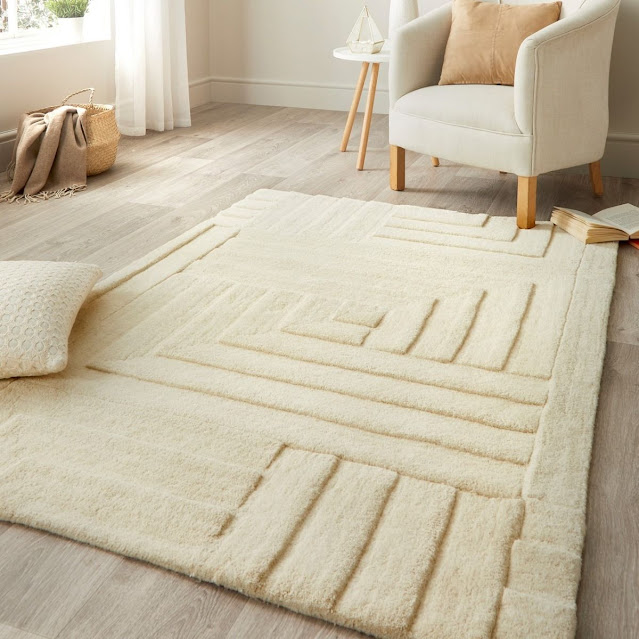Long and narrow rugs are referred to as "runner rugs" in this context. The style of these rugs is often rectangular, though you may also get them in a few other odd shapes. Whatever their shape, runner rugs often have lengths that are far greater than their width. Runner rugs are commonly used on staircases, constrained hallways, bedrooms, the home's entry, the kitchen, and in bathrooms in front of sinks. Below you will find how you can place your runner rugs in different areas in your home:
1) Runner Rug In Entryway
Make
sure your entryway has the exact appearance you want. Even though you might not
spend much time in it (unlike the living room or bedroom), it gets a lot of
use. And this is the first place guests notice when they enter your house.
As
a result, it's the ideal location to add a runner rug to enhance the decor.
Additionally, since most entryways have a small footprint, a runner rug can
look great in a narrow entryway. Adding a runner rug to an entryway can assist
reduce noise from footsteps as people enter and exit the house, just like they
do in a corridor. Additionally, it can assist in safeguarding your floors while
customers tie up and take off their shoes in the entryway.
2)Carpet Runners For Space
Another
extremely traditional option for runner rugs is a carpet runner for stairs. It
can also be interpreted in a few different ways. A modern runner rug, for instance, could be positioned at the top or
bottom of the steps.
Use
your runner rug on the stairs themselves for a more conventional and
eye-catching alternative. This is a particularly popular style for otherwise
polished hardwood staircases since it not only adds visual warmth but also
helps to lessen noise and the chance of falling.
3) Kitchen Carpet Runner
Your
kitchen is also a wonderful additional location for a runner rug. Since many
people already have rugs in their kitchens, a runner rug might help provide
more coverage with just one rug. A carpet runner may bring character to a
kitchen. You can use a runner rug with a bolder pattern or color as a focal
point in a modern kitchen with neutral tones.
4)Bathroom Carpet Runners
A
carpet runner can be very useful in bathrooms that are smaller and more
constrained! One benefit of using a single rug rather than multiple ones is
that runner carpets are long enough to save space. This might in some
situations make a decor scheme more unified. You can use a runner rug to lessen
slips and falls on a wet tile floor as long as you pick a strong rug that's
appropriate for use in the bathroom.
5)Runner Rug In The Bedroom
The
last thing you want to do when you wake up in the morning is to throw the
covers away and place your feet on the chilly floor. This issue can be
resolved, and a runner rug next to the bed can add some additional padding to a
hard floor. In addition, a bedroom typically breathes the coziest atmosphere in
a house. After all, that's where you sleep! Rugs can therefore be a great way
to warm up a space.
6)Dining Room Carpet Runner
The
fundamental design of a runner rug, specifically its proportions, is suitable
for usage in a dining area. It's an especially helpful tool if your dining room
table is long and narrow. In similar circumstances, it is simple to lay a
runner under the dining room table that is a little broader and longer than the
table itself. If your dining area isn't physically separated from the kitchen
or living room but you still want to create a feeling of visual separation,
then this can be a very helpful tool.
7)Using Runner Rugs In Small Places
In
most homes, there are often multiple little, constrained spaces between other
pieces of furniture, particularly in dressing rooms, walk-in closets, pantries,
and even laundry rooms. Overlaying a circle rug over these spots can assist make a
lovely focal point and divert attention from the fact that the room isn't very
big.











0 Comments